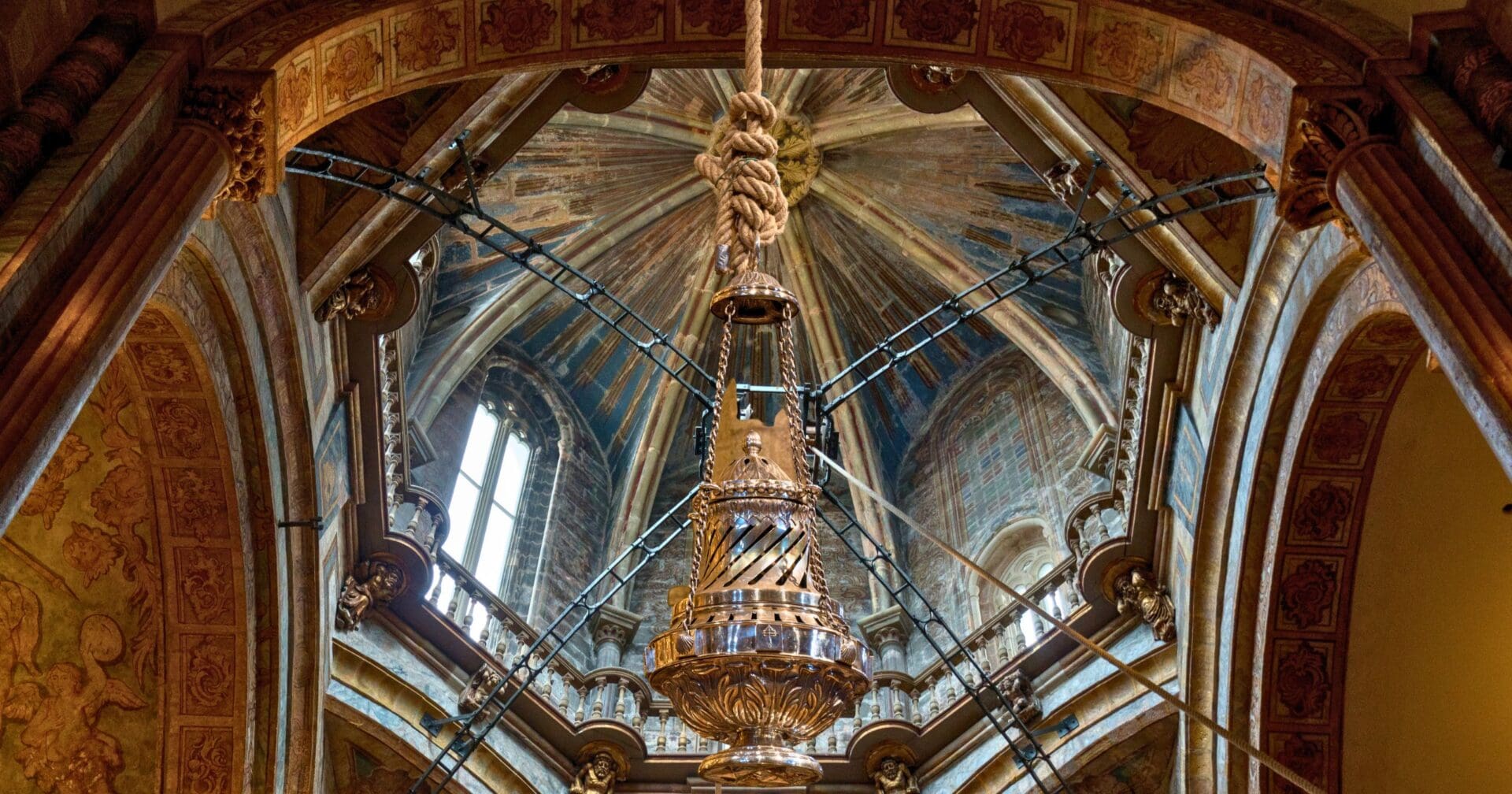The Santiago de Compostela Cathedral in Spain boasts a magnificent and historic artifact: the Botafumeiro.
This enormous thurible datesback to the 12th century. Named for the Galician term “botar” (to eject) and the Latin word “fume” (smoke), this symbolic censer is renowned for its dramatic swings during special ceremonies.
Crafted in 1851 by skilled gold and silversmith José Losada, the Botafumeiro is constructed from brass and bronze, then adorned with a thin silver layer, giving it a radiant golden appearance. Weighing 180 lbs and standing over 5 foot tall, it ranks among the world’s most significant censers. Though generally displayed in the cathedral’s library, for sacred occasions like the Feast of Saint James, it’s gracefully lowered onto the cathedral floor.
Suspended 65 feet from a pulley mechanism under the church’s dome, its motion is initiated manually. The Botafumeiro is then propelled by eight red-robed men, called tiraboleiros. As they pull the ropes, the thurible swings almost to the transept’s ceiling, releasing thick clouds of incense as it reaches speeds up to 42 mph! This mesmerizing performance can be witnessed on specific solemn dates, including Easter, the Feast of Saint James, and Christmas.
“Arriving pilgrims were tired and unwashed… It was believed that incense smoke had a prophylactic effect during plagues and epidemics.”
During Princess Catherine of Aragon’s 1499 visit, the Botafumeiro dramatically flew out of a cathedral window, miraculously injuring no one.
Today, to ensure safety, sailor’s knots secure the rope to the Botafumeiro. While other cathedrals have ceased using similar large thuribles, the Botafumeiro remains, a proud symbol of Santiago de Compostela’s rich Catholic history.
Photo credit: Fernando Pascullo, CC BY-SA 4.0 via Wikimedia Commons
















